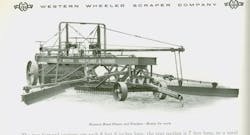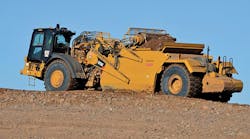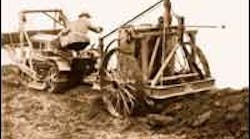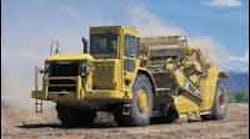Pull graders were not the only machines used for maintaining the surface of dirt and gravel roads. Road drags, planes and shapers were also used for this purpose.
Although exact details of its invention are lost to history, the road drag actually predated the grader. Invented when parties unknown first used a timber dragged by beasts of burden to smooth the ground, the road drag was produced into the 1920s, and the only major changes to its design were the addition of a metal cutting edge, larger size, and all-steel construction.
Road planes and shapers were essentially mechanized road drags. Mounted on wheels and also known in some literature as road finishers, road planes used various combinations of adjustable blades and moldboards to impart a final crown onto an unimproved road’s surface. The largest of these machines could work the entire width of a two-lane road in one pass, carrying material up from the shoulders and spreading it at the crown, and the blades could be folded and swung into the width of the frame for transport. One such machine, built by Russell Grader Manufacturing, used a single extra-wide blade whose end and center sections could be set to the desired profile.
Both the road plane nomenclature and the unwieldy multilane machines described above were apparently phased out in the 1920s. Smaller, one-lane road shapers were produced as late as the 1950s by Gledhill Road Machinery of Galion, Ohio. When it was introduced in the early 1930s, the Gledhill road shaper was notable for having one of the earliest true hydraulic control systems to be used on a piece of construction equipment.
Towed behind a truck, the shaper applied a vee-shaped framework of skids to the road surface, and the shaper’s operator set the skids to the desired profile by means of a system of cranks and a hand-operated hydraulic pump.



